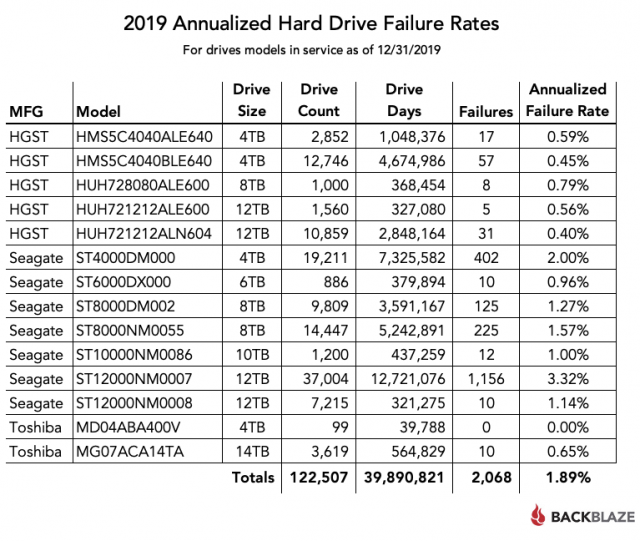

Based on this data either HGST, or Hitachi would be a solid choice when it comes to preserving your data. We saw similar results for Q2 of last year. Overall, Seagate was probably the worst offender when it comes to failed HDDs over other brands such as Western Digital or Hitachi. Of that number, there were 1,980 boot drives and 108,660 data drives. The report includes a lot of data that is definitely worth a read. As of June 30, 2019, Backblaze had 110,640 spinning hard drives in our ever-expanding cloud storage ecosystem.

With such a large sample size in such a controlled environment these stats are overall quite accurate with how drives are performing based on each manufacturer. Backblaze is one of the largest online cloud backup storage solutions with tens of thousands of hard drives currently in use so you can bet they go through a lot of drives. The cloud backup service periodically posts detailed stats on. The company started using SSDs in the fourth. Other useful statistics such as service and uptime are also included in the report. Backblaze runs storage pods containing more than 129,000 HDDs from various manufacturers, and ranging in capacity from 4TB to 16TB. For the first time, Backblaze's latest report on storage drive reliability is focusing on Solid State Drives (SSD) rather than HDD units alone. Not only that, but the cumulative AFR of SSDs (from 2018 to 2021) is around 1.07, which is actually less than the 1.40 cumulative AFR of HDDs (from 2013 to 2021). In the market for a new hard drive and concerned about reliability? Every quarter Backblaze publishes its hard drive failure rate statistics to the public categorized by manufacturer and drive size. Nearly all of the SSDs tested by Backblaze have an AFR of less than 1, with some models falling below the 0.6 AFR that Backblaze looks for in its most reliable drives.


 0 kommentar(er)
0 kommentar(er)
